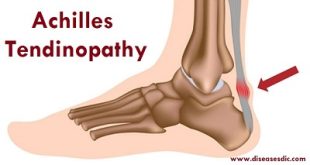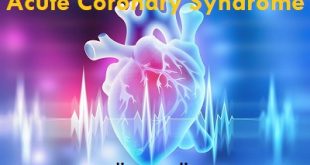Definition
If you have agoraphobia, it means you get anxious about having a panic attack. As well as crowds and queues, you may fear other places or situations where you’ve had a panic attack before. This fear makes you avoid these situations or do things to help manage your anxiety, such as only catching the bus with a parent or friend. While these behaviors can decrease your anxiety in the short term, in the long term they can make your anxiety worse. The severity of agoraphobia varies enormously between sufferers from those who are housebound, even room-bound, to those who can travel specific distances within a defined boundary. It is not a fear of open spaces as many people think.
Who gets agoraphobia?
In general, women are more likely to have an anxiety disorder, and twice as many women as men have agoraphobia. Most people who have agoraphobia develop it before the age of 35.
Research has shown that some specific events also increase a person’s risk for developing agoraphobia. These include experiencing the death of a loved one, being attacked, and being abused. People who tend to be nervous or anxious and those with a relative with agoraphobia also have a higher risk of developing it.
Types
Two types of agoraphobia are currently listed. They are:
- Panic disorder with agoraphobia
- Agoraphobia without a history of panic disorder
Risk factors
Gender: Women are at a higher risk of developing agoraphobia than men.
Stressful Events: If you encounter sexual abuse or any other traumatic event in childhood, you could develop agoraphobia later in life. Widowed, separated or divorced individuals are at a higher risk.
Mental Ailments: If you suffer from any mental disorders or depression, you could develop agoraphobia.
Age: Young adolescents or middle-aged adults are at a higher risk of agoraphobia.
Ethnicity: People of Hispanic, Asian, or African/African-American descent have a lower risk of developing this disorder.
Causes
While the cause can be hard to pin down, agoraphobia is more common in people who tend to be anxious or nervous. About two-thirds of people with panic disorder develop agoraphobia. Other factors that make it more likely you will develop agoraphobia include:
- Trauma
- Severe stress
- Other mental illness, such as depression or eating disorders
- Drug or alcohol misuse
- A family history of anxiety or depression.
Symptoms
Typical agoraphobia symptoms include fear of:
- Leaving home alone
- Crowds or waiting in line
- Enclosed spaces, such as movie theatres, elevators or small stores
- Open spaces, such as parking lots, bridges or malls
- Using public transportation, such as a bus, plane or train
Symptoms
These situations cause anxiety because you fear you won’t be able to escape or find help if you start to feel panicked or have other disabling or embarrassing symptoms.
In addition:
- Fear or anxiety almost always results from exposure to the situation
- Your fear or anxiety is out of proportion to the actual danger of the situation
- You avoid the situation, you need a companion to go with you, or you endure the situation but are extremely distressed
- You experience significant distress or problems with social situations, work or other areas in your life because of the fear, anxiety or avoidance
- Your phobia and avoidance usually lasts six months or longer
Complications of Agoraphobia
Restricted Lifestyle: You do not step out of your house and this causes excessive overdependence on others even for simple activities like grocery or even a walk in the park. Your social life is almost nil or non-existent.
Depression: You remain prone to varied psychological disorders like depression, anxiety, panic attacks. You also suffer from loneliness, isolation, hopelessness, and an unknown or indescribable fear. Such disorders coupled with agoraphobia worsen your condition.
The possibility of Abuse: You seek solace and comfort in abusive habits like alcohol consumption, drugs, and others.
Suicidal Tendencies: To overcome your fear, loneliness, and isolation, you turn suicidal.
Diagnosis and test
Your doctor will make a diagnosis on the basis of your signs and symptoms, and may also conduct a physical exam or order blood tests to rule out other possible causes of your symptoms.
To be diagnosed with agoraphobia, you need to experience intense fear that you won’t be able to leave in the event of a panic attack or a possibly embarrassing event like fainting, in at least two of the following five situations.
- Using public transportation
- Being in open spaces, including parking lots, bridges, and malls
- Being in theatres and other enclosed spaces
- Waiting in line or being in a crowd
- Being outside of your home alone
These situations must also be ones that are avoided, gone through only with the presence of another person, or endured with intense fear. And these feelings and behaviors must go on for six months or more.
Treatment of Agoraphobia
Agoraphobia is usually treated with a combination of medication and psychotherapy.
Treatment is effective for most people with agoraphobia, but it can be harder to treat if people do not get early help.
Medication
Healthcare professionals can prescribe either one or both of the following types of medication.
Selective serotonin reuptake inhibitors (SSRIs) are a type of antidepressant that can be prescribed to treat agoraphobia.
Other types of antidepressants can also be prescribed, but the adverse effects may be greater.
Anti-anxiety medications, also known as benzodiazepines, are sedatives that can relieve the symptoms of anxiety in the short term.
Benzodiazepines can be habit-forming.
The antidepressants may start with a higher dosage and slowly decrease when the treatment is ready to finish.
Starting and ending a course of antidepressants can sometimes lead to side effects that are similar to a panic attack, and caution is therefore advised.
Psychotherapy
Psychotherapy involves working with a therapist to reduce symptoms of anxiety so that the person will feel safer and able to function better.
Cognitive-behavioral therapy (CBT) focuses on changing the thoughts that cause the condition.
The person may learn:
- That it is unlikely that fears will come true
- That anxiety decreases over time, and that symptom can be managed until it does
- How to cope with the symptoms
- How to understand and control a distorted view of stress-inducing situations
- How to recognize and replace thoughts that cause panic
- How to manage stress
One task might be to imagine the situations that cause anxiety, working from the least to the most fearful.
Therapists who treat agoraphobia may offer initial treatment without the patient needing to visit the therapist’s office.
Options may include telephone or online therapy, home visits, or treatment sessions in a place that the patient considers safe.
Family support can also help by showing understanding and by not pushing the individual too far.
Self-help tips for managing symptoms
Self-care that may help includes:
- Sticking to a recommended treatment plan
- Learning how to relax and achieve and maintain a sense of calm
- Trying to face feared situations, as this can make them less frightening
- Avoiding alcohol and recreational drugs
- Staying healthful with physical activity, a balanced diet, and enough sleep
Prevention of Agoraphobia
There’s no sure way to prevent agoraphobia. However, anxiety tends to increase the more you avoid situations that you fear. If you start to have mild fears about going to places that are safe, try to practice going to those places over and over again before your fear becomes overwhelming. If this is too hard to do on your own, ask a family member or friend to go with you, or seek professional help.
If you experience anxiety going places or have panic attacks, get treatment as soon as possible. Get help early to keep symptoms from getting worse. Anxiety, like many other mental health conditions, can be harder to treat if you wait.
 Diseases Treatments Dictionary This is complete solution to read all diseases treatments Which covers Prevention, Causes, Symptoms, Medical Terms, Drugs, Prescription, Natural Remedies with cures and Treatments. Most of the common diseases were listed in names, split with categories.
Diseases Treatments Dictionary This is complete solution to read all diseases treatments Which covers Prevention, Causes, Symptoms, Medical Terms, Drugs, Prescription, Natural Remedies with cures and Treatments. Most of the common diseases were listed in names, split with categories.








How to treat panic disorder?
Psychotherapy, also called talk therapy, is considered an effective first choice treatment for panic disorder.
Medications include Selective serotonin reuptake inhibitors (SSRIs), Serotonin and norepinephrine reuptake inhibitors (SNRIs), and Benzodiazepines.
I have been battling this for 20 years. Now they do not want to prescribe and I suffer alone.